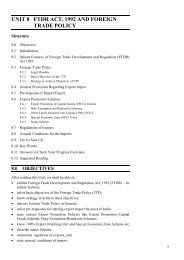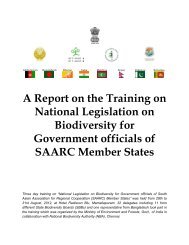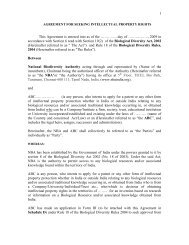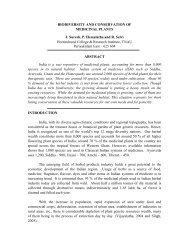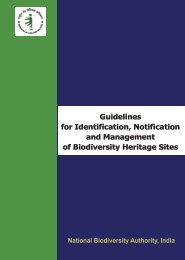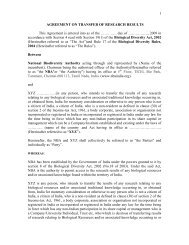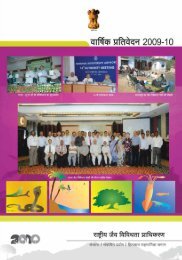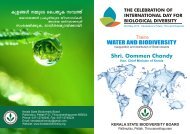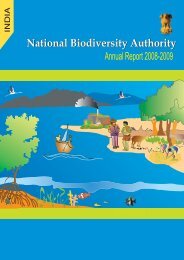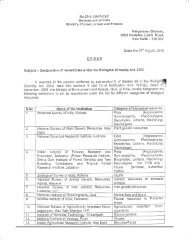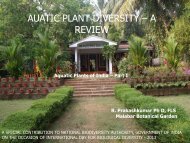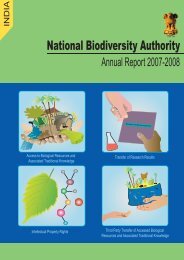BCIL BOOK.pmd - National Biodiversity Authority
BCIL BOOK.pmd - National Biodiversity Authority
BCIL BOOK.pmd - National Biodiversity Authority
You also want an ePaper? Increase the reach of your titles
YUMPU automatically turns print PDFs into web optimized ePapers that Google loves.
NATIONAL BIODIVERSITY ACTION PLAN<br />
development activities. The dominant theme of this<br />
policy is that while conservation of environmental<br />
resources is necessary to secure livelihoods and wellbeing<br />
of all, the most secure basis for conservation is<br />
to ensure that people dependent on particular<br />
resources obtain better livelihoods from the fact of<br />
conservation, than from degradation of the resources.<br />
The NEP prescribes that human beings are at the<br />
centre of concerns for sustainable development and<br />
they are entitled to a healthy and productive life in<br />
harmony with nature.<br />
The principal aim of the <strong>National</strong> Forest Policy,<br />
1988 is to ensure environmental stability and<br />
maintenance of ecological balance including<br />
atmospheric equilibrium which are vital for sustenance<br />
of all life forms, human, animal and plant. The<br />
derivation of direct economic benefit must be subordinated<br />
to this principal aim. The national goal<br />
should be to have a minimum of one-third of the<br />
total land area of the country under forest or tree<br />
cover. In the hills and in mountainous regions, the<br />
aim should be to maintain two-third of the area under<br />
such cover in order to prevent erosion and land<br />
degradation and to ensure the stability of the fragile<br />
ecosystem.<br />
India, over the past sixty years, is witness to<br />
transition from a predominantly rural based agrarian<br />
society into a diversified economy. India’s planned<br />
approach to socio-economic development and poverty<br />
eradication has underlined sustainability of natural<br />
resources. Conservation and resource management is<br />
integral to development plans. A sound environmental<br />
policy and legal framework is also in place. Recent<br />
economic liberalization policies have seen new strides<br />
in technology upgradation, cleaner fuels, efficiencies<br />
in production and environmentally sound practices.<br />
At the same time, Indian society’s traditional respect<br />
for the ecology, rivers and nature continues to remain<br />
as strongly rooted as ever. The planning process also<br />
seeks to diversify the economy further into the<br />
industrial and service sectors, while accelerating the<br />
growth rate. Development has to be long-standing and<br />
inclusive, involving both the private and public sectors<br />
as partners. The national planning process emphasizes<br />
promotion of people’s participatory institutions and<br />
social mobilization, particularly through womenempowerment,<br />
for ensuring the environmental<br />
sustainability of the development process. Socioeconomic<br />
development consists of increase in the<br />
production, distribution, sale and consumption of<br />
food, goods and services. Planning in India seeks to<br />
increase wealth, and thereby, human welfare, and<br />
provide a safety net for the environment.<br />
The current phase of graduated economic<br />
liberalization in India which began in 1991, proceeds<br />
hand in hand with a sustained process of political<br />
decentralization which aims at devolving works and<br />
responsibilities on culturally diverse populations to<br />
implement local development plans. Project and<br />
6



